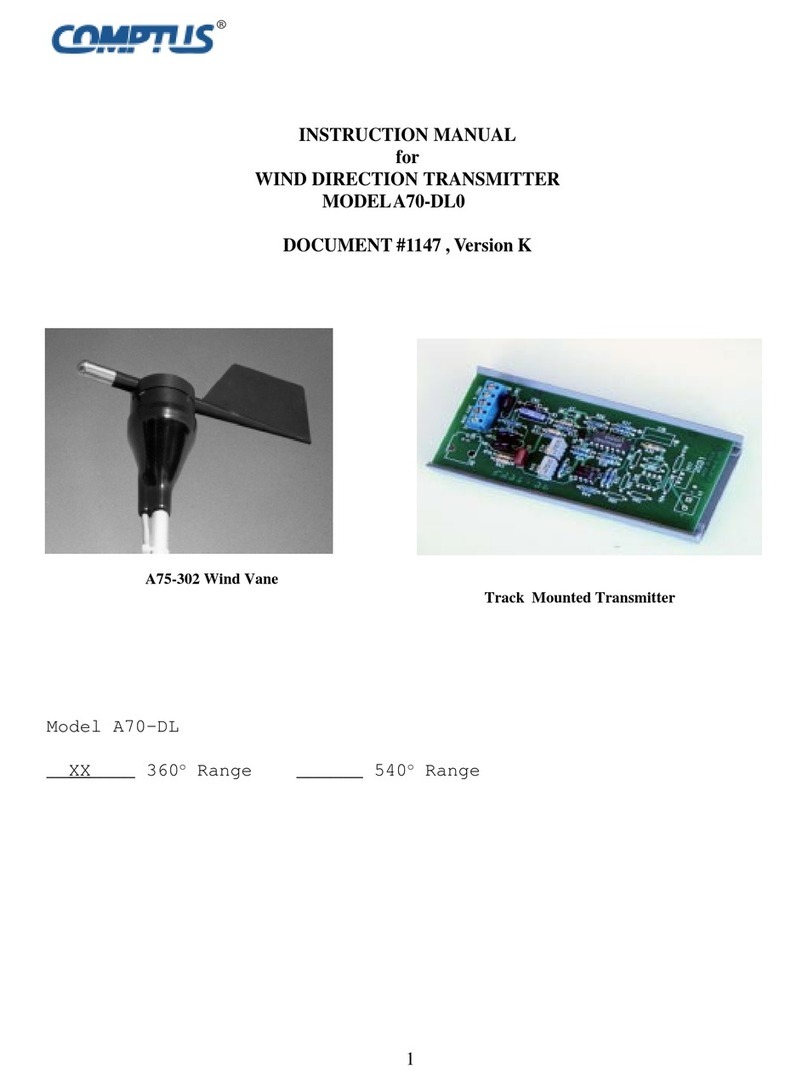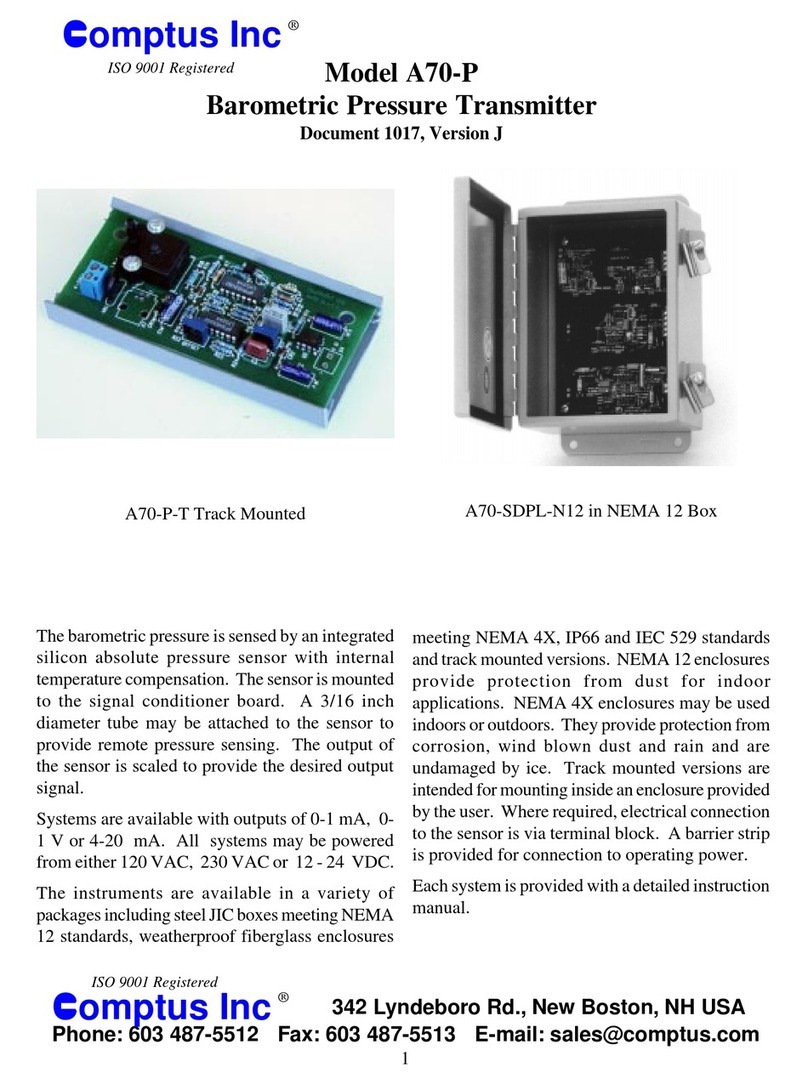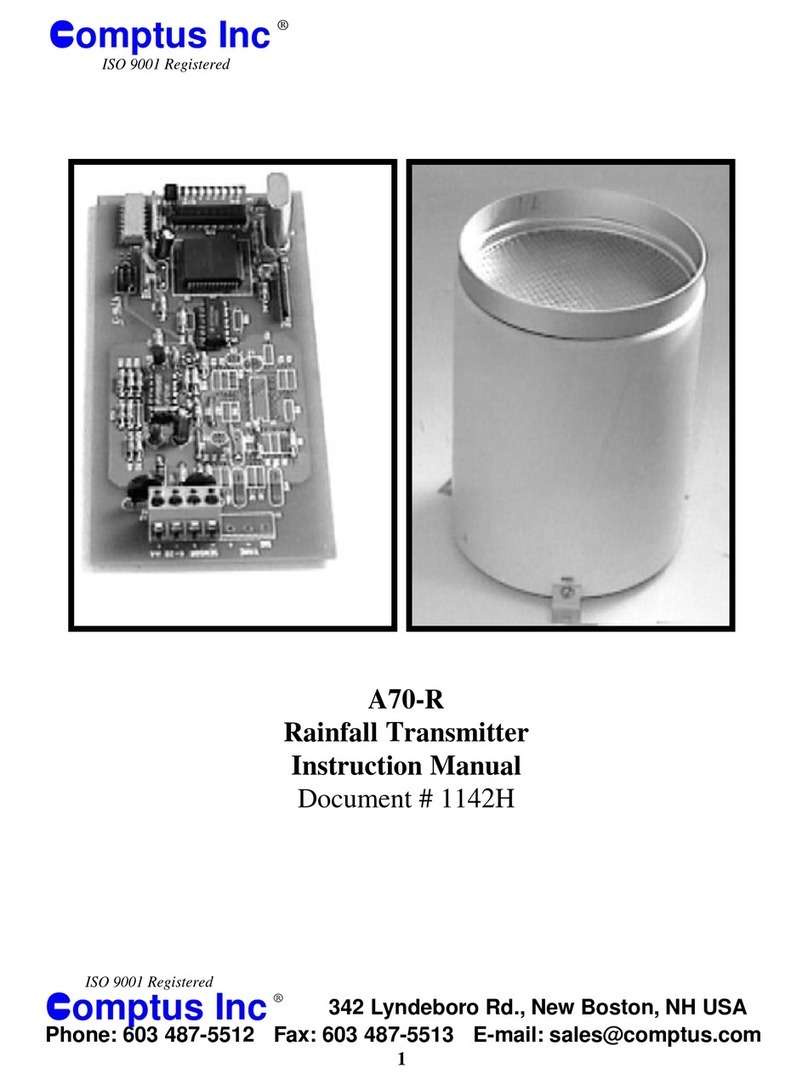
7
INSTALLATION
SENSORS
Thesensors shouldbe mountedat thepoint atwhich
itisdesiredtosample thewind. Typically,it is
locatedas highas feasibleand wellclear ofobstruc-
tions.
Theymaybemountedon anexistingstructure, ona
naturalformation, or ona mast ortower. It is
desirabletomountthemso thatthesupporting
structurewillnotinfluencethewindcharacteristicsin
theirimmediatevicinity. Ifthey aremountedabovea
rooftoporsimilarbuildingstructuretheyshouldbe
highenoughso thatthewinddeflectedoffthe
structurewillnot affectthem,typically 5to10 feet
ormore.
Ifmounted tothesideofa supportingstructure they
shouldbe mountedatleasttenstructure diameters
awayfrom the structurein ordertotake thesensors
outof thedisturbed airaround thestructure. They
shouldbemounted towardtheprevailingwindand
shouldbepositionedsothat theinfluence ofstruc-
turalmembersisminimized.
Ifthesystemisto monitorwindcharacteristics fora
proposedwind poweredgenerator,the altitude
shouldbe at least 30feet above the groundor the
supportingstructure forthewindgeneratortower. If
ahorizontal-axis machineisproposed,itis accepted
practiceto mountthe anemometerhead atthe
machine’scenterof rotation.
Apreferredmountingwhichiscommonly usedisa
telescopictowerforinstallationsuptofortyorfifty
feethigh.Atowercommonlyused forTVantenna
support,consistingofconcentricpiecesoftubing
approximatelytenfeet long,guyedateachsection, is
suitable. Abovethisheightself-supporting orguyed
lightweightstructuraltowerscanbeused.
Ifthe sensors areto bemountedon ametallic tower
considerationmustbegiventogalvaniccorrosion
whichoccursbetweendissimilarmetals. Attachment
ofaluminumboomstogalvanizedsteeltowersusing
stainlesssteel hoseclampsis acceptable.
Forothercombinations ofmetalsrecommended
practiceis toelectrically insulatetheboom fromthe
towerwith aplasticbushingorsheet. Preferably
fabricatea boomfrom thesame materialas the
tower. Thisconsiderationisespeciallyimportantin
locationsexposed tosaltspray andair.
Anemometer
Notethe locationof the1/8"diameterholesinthe
anemometerbase and inthe topofthe stubmast.
Donotpress on theanemometerrotor as the
bearingmay bedamaged. Grasp theanemometer
aboutits lower body andpress it ontothe stub mast.
Alignthe1/8"holesand securetheanemometerto
thestub mastby passingthecotterpinthrough these
holes. Attachthe stub mast tothe tower or other
supportusingthetwostainless steelhoseclamps.
Slidethe protective bootoverthe base ofthe
anemometerafter wiringiscomplete. Tape ittothe
mastto secureit inplace.






























